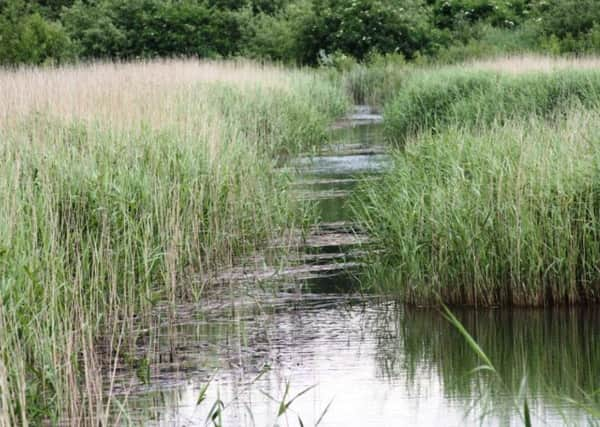Birdwatch: Eyes to the skies above reedbeds to track booming birds


In spring conservationists listen for the booming ‘song’ of the males on territories and this year 150 were heard compared with 140 last, probably the highest number in this country since the early 19th century.
But hearing bitterns is one thing, working out how many have nested and with what success is another and requires hours of patient observation.
Advertisement
Hide AdAdvertisement
Hide AdTo confirm a bittern nest there needs to be sightings of at least four in and out flights over four hours from a particular area in a reedbed.
These flights are made by female bitterns leaving the nest to find food and bringing it back to feed their young - once their booming is finished and they have mated with one or perhaps two females the males have no further involvement in hatching or feeding the young.
Sometimes feeding flights are easy to observe as a female can fly for quite lengthy periods above the reeds before dropping into the nest. At other times she can fly low along channels between the reeds with only the briefest of glimpses or, even worse, walk through the reeds to reach the nest.
If a nest should fail at the egg stage there are no feeding flights at all and the chances are that the observers will have no idea it is there at all.
Advertisement
Hide AdAdvertisement
Hide AdWith these difficulties feeding flights, like booming males, can only provide an estimate of bittern numbers but an educated guess is better than nothing.
Feeding flights have been seen at five places in the Lower Aire Valley in the past week or two, confirmation that this is an area of growing importance for bitterns.
Another pair of birds nesting deep within the reedbeds is the Montagu’s harriers at Blacktoft Sands. The nest is in an inaccessible part of the reedbed but staff are confident that at least one chick has hatched because of the behaviour of the male, now bringing in food four or five times a day and the female flying around more instead of incubating eggs.
This is the second year running that Montagu’s harriers, Britain’s rarest breeding raptor, have bred in the Humber. Last year a pair reared a single chick in a reedbed near to Blacktoft Sands.
Advertisement
Hide AdAdvertisement
Hide AdA drake ring-necked duck, a North American species, is still being seen on the reserve while other sightings included a female red-necked phalarope on Monday, possibly the same bird as one seen on the Old Moor reserve near Barnsley on Saturday.
Another North American vagrant, a drake surf scoter, was seen with more than 500 common scoters off Long Nab, Burniston.
Up to seven immature pomarine skuas were seen off Flamborough Head and Filey and a black guillemot off Flamborough. A bee-eater was seen again at Spurn.
Up to three honey buzzards were spotted from the raptor viewpoint at Wykeham Forest.
A black kite, was reported this week over Dewsbury and Ossett.